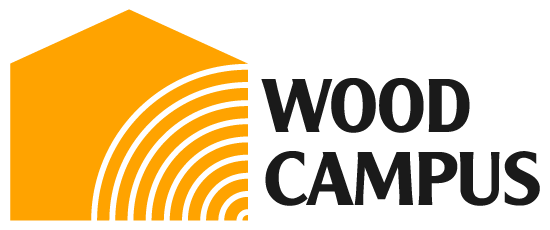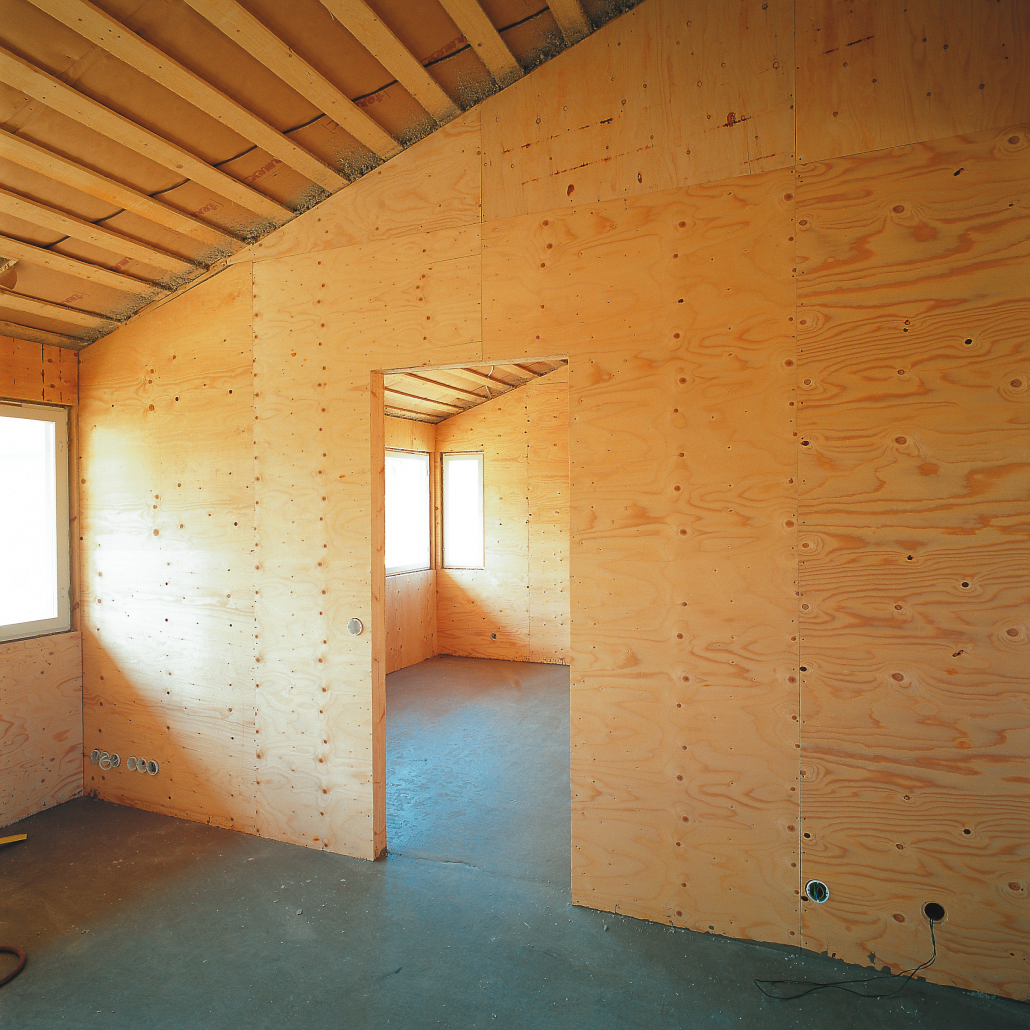Sheet Materials
Wood Campus Timber Trade Topics are produced in collaboration with Timber Development UK.
TOPIC CHECKLIST
- Does your structural plywood meet Eurocode 5?
- Are the sheet materials you are using fit for purpose?
- Are they CE marked?
- Are you using the right grade for the job?
- Are the sheets marked as FSC or PEFC certified?
What are sheet materials?
Sheet materials are structural and non-structural panels engineered from both solid timber and recycled timber using different types of adhesives.
The most widely used products in construction are plywood, medium density fibreboard (MDF) particleboard (chipboard) and oriented strand board (OSB).
They all have different grades for different uses. It is important to use the correct grade for the job.
Plywood
A versatile building material with a wide range of applications, from wall and floor sheathing, to designer interiors and glider fuselages. This Topic deals mainly with structural plywood.
Softwood plywood is usually made from European spruce and mainly used in construction. Hardwood plywood is usually European birch, with clearer grades available for decorative use.
Marine plywood
It has good weather resistance and strength properties in compliance with specific standards such as BS EN 13986 (plywood in marine use), rather than the structural standard code Eurocode 5, and should not be used structurally. Marine plywood must have third party accreditation to demonstrate full compliance with BS 1088: 2003 Marine Plywood. See the TTF guide to Marine Plywood.
Plywood for formwork
Durability, glue bond performance and resistance to decay may have to be considered, if not appearance and strength. Suitable sheets are available from Scandinavia, North America and the Far East.
- Sheet materials must comply with the Building Regulations and be fit for purpose.
- They must comply with the Construction Products regulation (CPR) through compliance with BS EN 13986.
- Must carry a CE mark to indicate CPR compliance and fitness for purpose.
- Check the characteristics of the sheets you are using for their suitability for the job, especially when using sheets for structural use.
- Look for FSC or PEFC marks to show the timber is from legal and sustainable sources.
- Using plywood structurally? Make sure the plywood you use is listed in Eurocode 5 (ref the earlier BS 526802:2003).
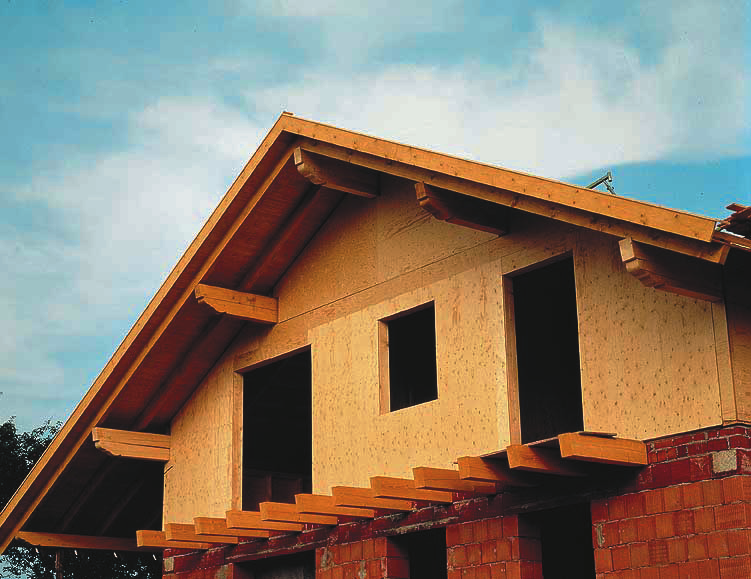
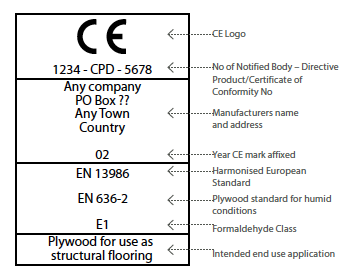
Structural plywood
Plywood for structural loadbearing applications, such as walls, floors and roofs, must be strong enough for the loading. Always use plywoods listed in Eurocode 5, which typically comes from Sweden, Finland, America or Canada.
They must also comply with the Construction Products Regulation (CPR) by meeting the requirements of BS EN 13986, or by other means.
Must carry the CE mark to demonstrate CPR compliance and fitness for a particular purpose.
Plywood for roofing
Spruce plywood is ideal as a roofing membrane, strong, light-weight, easy to handle and fully compliant with Eurocode 5. Precisely dimensioned, the panels are easily converted into durable surfaces, such as the foundation for the construction of moisture barrier roof structures.
They can also be fitted together to form safe working surfaces while the roof installation is being carried out. In attic spaces, the foundation panels can be left uncovered.
Installing plywood for roofing
Fitting plywood sheets to roof trusses to form a solid base for battens is known as sarking. It results in a robust roof structure that is particularly popular in Scotland.
- When using on-site, store panels in dry conditions, on a flat, level surface, clear of the ground
- Joists must be treated ‘dry’, or proprietary I-beam
- Regularise timbers to provide an even bearing surface for the panels
- Ensure all roof support timber dimensions and spacings are calculated by a qualified structural engineer in accordance with the overall requirements of the roof
- Lay panels with the face grain parallel to the span
- Support all short edges on a joist and stagger end joints
- Support the perimeter of the roof continuously on noggins
- Use galvanised flat head nails, or countersunk screws, 2.5 times the panel’s thickness
- Space fixings not less than 4 to each supporting timber per board width of 1220mm, and not less than 10mm from the panel edge
- Protect panels from wet weather until felt battens and tiles have been fixed. Some manufacturers provide a removable weather-resistant coating to give short-term protection
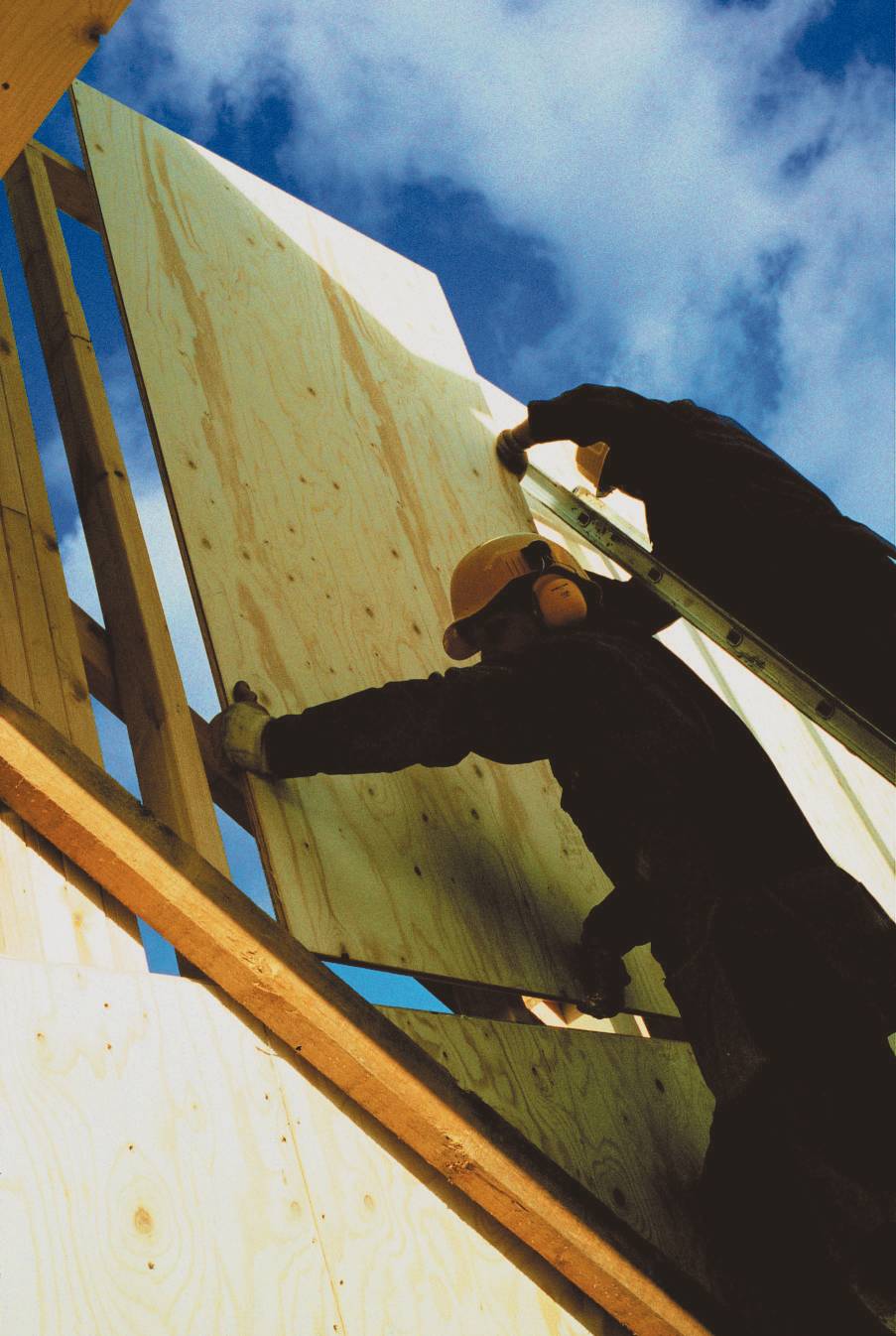
How durable are battens?
Most battens are supplied with an industrially applied treatment process designed to provide a 60-year design life under Use Class 2. The relevant Standard is BS 8417:2011 Preservation of Wood.
Cut ends should be treated with brush-applied preservative, especially those in contact with mortar.
Why use BS 5534-compliant battens?
Graded battens are usually graded, with the exception of a final grading for knots and wane.
Standard/Ungraded battens may be smaller than those allowed in BS 5534 or have other strength-reducing characteristics.
BS 5534 factory-graded battens may be more expensive than ungraded or partially graded battens, but they are the best choice because:
- They avoid time spent on site grading, which is not best practice
- And time spent marking each batten, which is sometimes a contractual requirement
- They result in less wastage, which can be as high as 40%
- And reduced liability if there is a problem with the overall roof
Typical plywood thickness and layers (up to 50mm available)

The most common types of plywood available for use in UK construction are structural plywood for humid uses (EN 636-2 S) and general plywood for humid uses (EN 636-2 G). These types of plywood are made from durable resins that are suitable for most construction uses.
| PLYWOOD TYPE | TYPICAL USES | STANDARD | THICKNESS |
|---|---|---|---|
| Structural plywood | Must be CE marked to show that it conforms to the Construction Products Regulation (CPR). Structural plywood has proof of strength performance provided by the supplier in addition to other product performance information. | ||
| Softwood | Floors, walls and roofs | BS EN 13986:2004 | 9mm – 24mm |
| Hardwood | Floors, walls and roofs | BS EN 13986:2004 | 3.6mm – 25mm |
| Non – structural plywood | General plywood has product performance information provided by the supplier but this will not include strength performance data and so should not be used in a structural application | ||
| Softwood | Signage, shelving, cases, boxing-in | BS EN 13986:2004 | 12mm – 18mm |
| Hardwood | Signage, shelving, cases, boxing-in | BS EN 13986:2004 | 12mm – 18mm |
| Marine ply | Mainly used in boatbuilding; also other areas where moisture is a consideration, such as bathrooms and kitchens. Prime and seal before fixing. | Must conform with BS 1088:2003 | 6mm – 25mm |
| STRUCTURAL PLYWOOD STANDARDS | |
|---|---|
| BS EN 13986:2004 | The harmonised European standard for wood-based panels for use in construction. |
| EN 636-1 | Dry use. Interior no risk of wetting. |
| EN 636-2 | Humid use. Most construction uses fall into this category as they are covered or rarely exposed to weather, but still at risk of wetting. |
| EN 636-3 | Exterior use. Permanently outside exposed to the weather. |
| EN 314-2:2003 | Bonding quality requirements. |
MDF
A stiff, flat, engineered sheet made of wood fibres, bonded with resin. It has a consistent surface, without grain or knots and can be machined, drilled, cut and filled easily without damaging the surface.
It is available in finished products, such as skirting boards, architraves and other mouldings, and as Fire-rated and external grades. It is sometimes colour-coded by dyes in the board layers:
- Green for moisture resistant
- Grey for exterior use
- Red shows treatment with flame-retardant chemicals
When used in construction, MDF must comply with Construction Products Regulation (CPR).
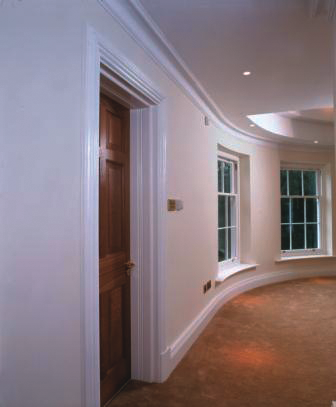
Always wear a facemask when sanding wood – especially MDF.
Particleboard
Particleboard, or chipboard, is made from wood chips, often recycled, compressed together with resin to give a smooth, knot-free surface.
Different grades and thicknesses are available for use in a variety of structural and non-structural applications.
OSB
Resin-bonded sheets of thin strands of wood, compressed into layers to form a mat, giving good dimensional stability with no knots or voids.
Different grades and thicknesses are available for use in a wide range of structural and non-structural uses.
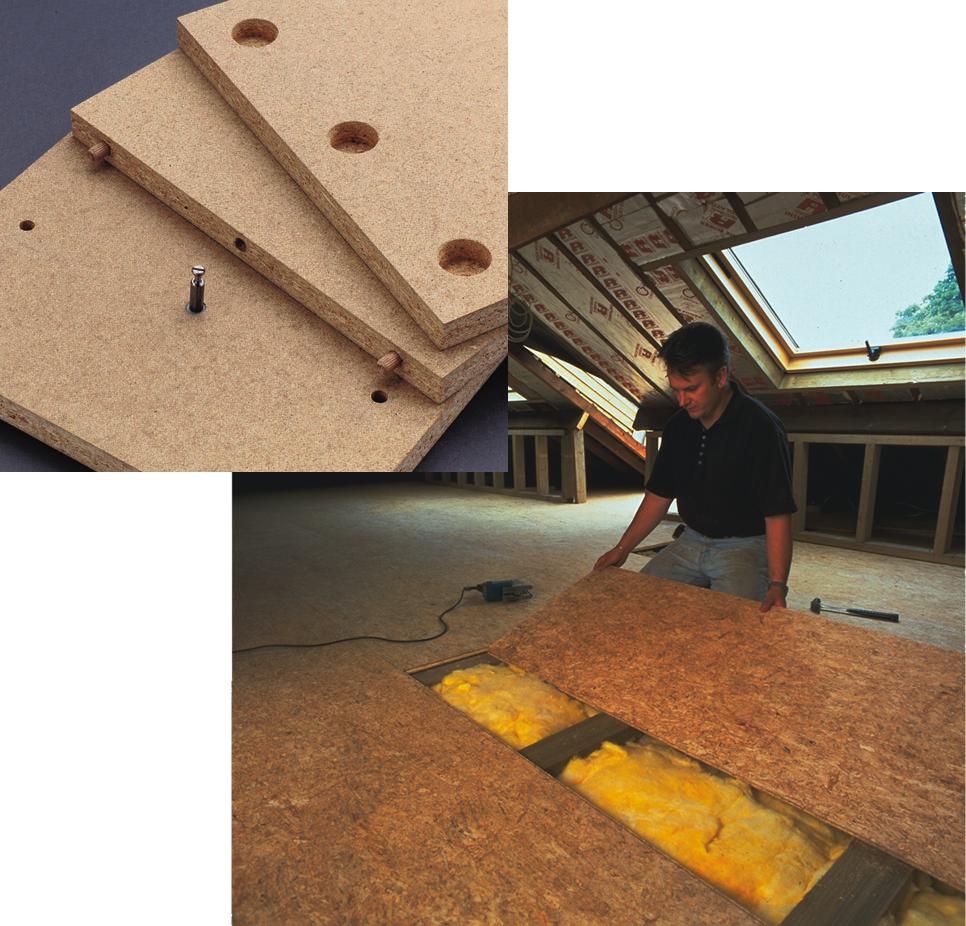
Further information and advice
BS EN 13986:2004 Wood-based panels for use in construction. Characteristics, evaluation of conformity and marking, BSI
BS EN 622-5:2009 Fibreboards. Specifications. Requirements for dry process boards (MDF), BSI
BS 5268-2:2002+A1:2007 Structural use of timber. Code of practice for permissible stress design, materials and workmanship, BSI
BS 1088-1:2003 Marine plywood. Requirements, BSI
BS EN 300:2006 Oriented strand boards (OSB). Definitions, classification and specifications, BSI
BS EN 312:2010 Particleboards. Specifications, BSI
BS EN 636:2003 Plywood. Specifications, BSI
BS EN 314-2:1993 Plywood. Bonding quality. Requirements, BSI
DD CEN/TS 1099:2007 Plywood. Biological durability. Guidance for the assessment of plywood for use in different use classes, BSI
For further information on all the sheet materials, specifications, sizes and thicknesses, fixing locations, support details and spans, especially in structural applications, ALWAYS refer to the manufacturer’s own literature or website, or enquire through your local merchant.
Sustainable timber
Timber is the most sustainable mainstream building product. It is naturally renewable. Over 90% of timber used in UK construction comes from Europe, where more trees are grown than harvested (source: TTF Statistical Review 2016).
Softwood and temperate hardwood forests in Scandinavia, Europe, Canada and North America are stable or growing. Growing forests act as carbon sinks; wood products act as carbon stores.
Ask for PEFC or FSC Chain of Custody certification.
See Wood Campus RIBA CPD module Procuring Sustainable Timber for more on timber certification and sustainability and government requirements.

